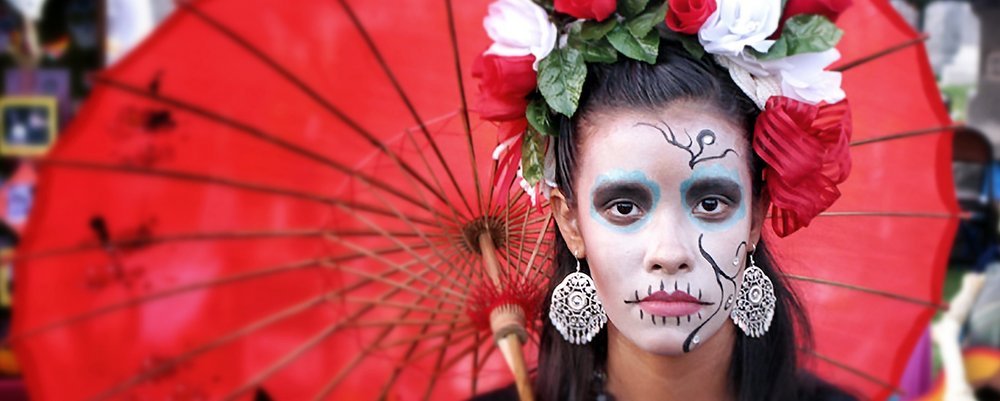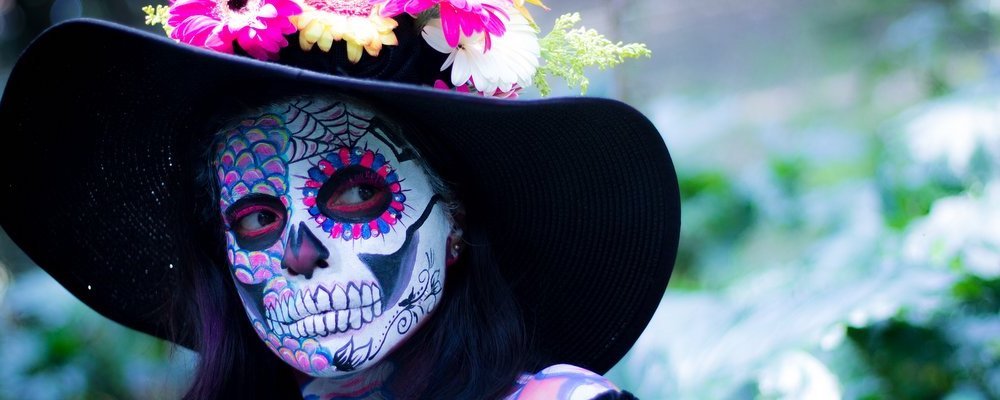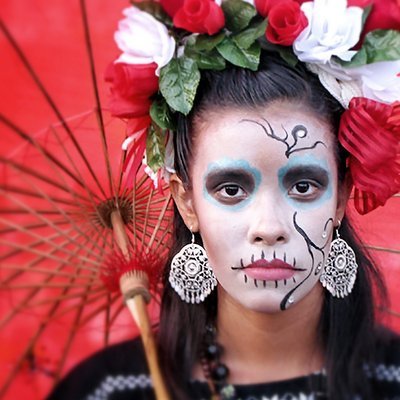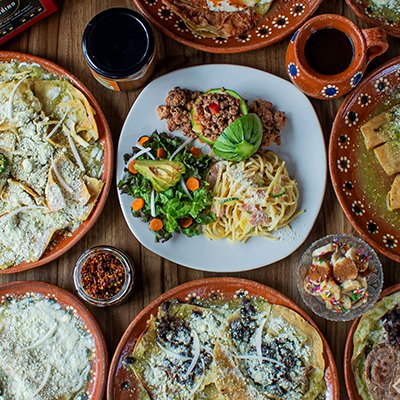While skeletons and skulls often evoke the creepy and macabre, Mexico’s Day of the Dead—Dia de los Muertos in Spanish—is instead a celebration of life. A fusion of indigenous traditions and Catholicism brought to Central and South America by the Spanish, Dia de los Muertos is characterized by music, parties, dancing and parades. Families will gather graveside in cemeteries lit by candles to commune with the dead, reminiscing and celebrating the lives of their loved ones and creating temporary altars offering food, drink, and objects their relatives enjoyed in life. Rather than being a day of mourning, Dia de los Muertos is about keeping the memories of the dead alive.

Many people often associate the holiday with the more commercial Halloween on October 31, but Dia de los Muertos is actually celebrated on November 1 on All Saints Day, which honors children, and November 2 on All Souls Day, which honors adults. The preparations often kick off a few weeks before in mid-October, with floral arrangements and sugar skulls appearing in surprising places. The most common symbols are skulls and skeletons, monarch butterflies, marigolds, and banners of colorful tissue paper. Dia de los Muertos holds such significance in Mexico that UNESCO recognized the holiday as an “intangible cultural heritage” in 2008.
Although Dia de los Muertos is celebrated throughout Mexico, it is most predominant in the central and southern regions of the country. Popular destinations include Janitzio and Patzcuaro, Michoacan and Merida, Yucatan. If you are in Mexico City, you can find Dia de los Muertos celebrations in San Andres Mixquic, in the southeast of the city, or in the canals of Xochimilco. However, Oaxaca City, located in the province of Oaxaca, offers some the biggest and most traditional festivities.

With a population of around 260,000, Oaxaca City has a charming historical center with well-maintained colonial architecture and walkable streets. The main square, the zocalo, provides a point of orientation and many of the processions, known as comparsas, will start there.
Local companies can arrange tours and transportation to nearby villages, such as Xoxocotlan and Atzompa, or you can go to the Oaxaca general cemetery, Panteon General (also called Panteon San Miguel), where the crypts will be illuminated by more than 2,000 candles. While the candlelight vigils in the cemeteries feel more intimate, you’re also sure to run into revelers with black and white faces painted like the traditional Dia de Los Muertos calaveras (skulls).
One of the highlights of Dia de los Muertos are the sand tapestries (tapetes de arena in Spanish). The tapestries feature intricate images with religious themes or whimsical skeletons designed with colored sand. You’ll find them throughout the city, but some of the larger ones can be found in the Plaza de la Danza by the Basilica de la Soledad, just off of Avenida de la Independencia.
Local bakeries prepare various kinds of bread known as pan de muerto (bread of the dead). These are typically sweet breads that are often flavored with anise seeds. One of the most common is pan de yema (yolk bread), which sometimes have small marzipan heads stuck in them. Pan de muerto is placed on the altars as an offering to the dead. Pan de muerto is best enjoyed with a cup of the local hot chocolate.
 Charlotte West is a freelance writer based in Seattle, Washington. She has written about travel, design, and architecture for publications such as Print, Afar, Budget Travel, and dwell.com. She has lived abroad in the Netherlands, Sweden, and Peru.
Charlotte West is a freelance writer based in Seattle, Washington. She has written about travel, design, and architecture for publications such as Print, Afar, Budget Travel, and dwell.com. She has lived abroad in the Netherlands, Sweden, and Peru.















